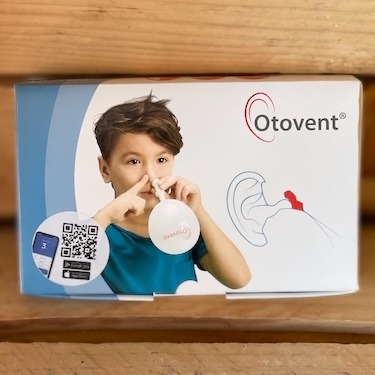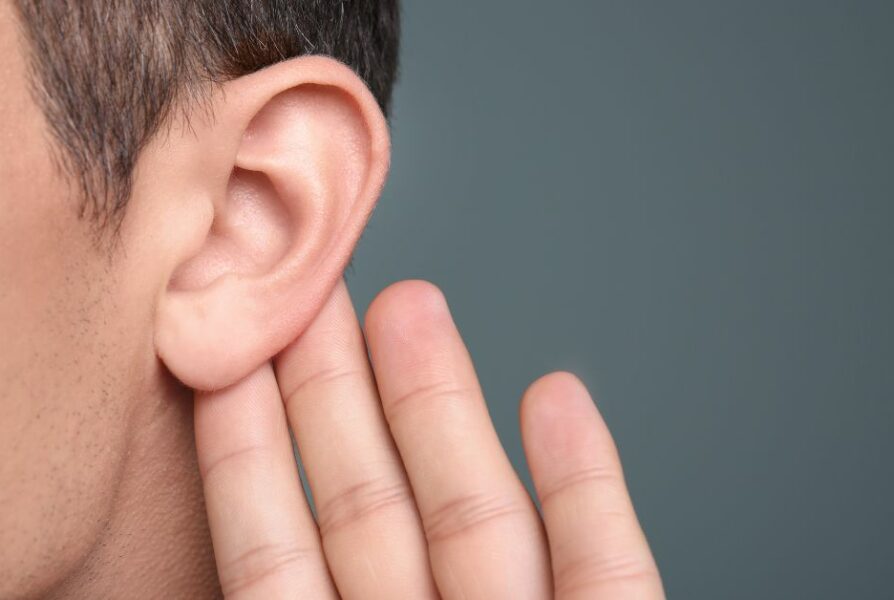Glue ear, or otitis media with effusion (OME), is a common condition affecting children and adults. It occurs when the middle ear becomes filled with thick, sticky fluid, causing hearing difficulties and discomfort. Understanding the causes, symptoms, and treatment options is essential for effective management.
In children, glue ear often occurs after an upper respiratory infection, such as a cold, which leads to inflammation and a build-up of fluid behind the eardrum. The condition can be particularly problematic for children as it may affect their language development and learning ability.
Common symptoms include muffled or reduced hearing, frequent ear infections, ear pain or discomfort, and difficulty understanding speech, especially in noisy environments.
Treatment options range from watchful waiting to medical interventions such as the insertion of grommets, which allow fluid to drain from the ear. Addressing the underlying causes and managing the symptoms can help improve hearing and alleviate associated difficulties.
In this article, we will explore the causes, symptoms, and available treatment options for glue ear, helping you understand this condition and its management.
What is glue ear?
Glue ear, also known as otitis media with effusion (OME), is characterised by the accumulation of thick, sticky fluid in the middle ear. This fluid build-up can occur without signs of an ear infection, making it a distinct condition from the more common acute ear infections. The fluid in the middle ear can lead to a range of problems, primarily affecting hearing and causing discomfort.
The middle ear is typically filled with air, which allows for the proper transmission of sound waves from the eardrum to the inner ear. However, in the case of glue ear, the middle ear becomes filled with a viscous, glue-like fluid, which impairs the movement of the eardrum and the tiny bones (ossicles) responsible for transmitting sound. This disruption in the normal functioning of the middle ear can result in temporary hearing loss, making it challenging for individuals to hear and understand speech, especially in noisy environments.
Glue ear is a relatively common condition affecting children and adults, though it is more prevalent in children. It is estimated that up to 80% of children will experience at least one episode of glue ear by the time they reach school age. The condition can significantly impact a child’s development, particularly in terms of language acquisition, speech, and academic performance, making it an important condition to understand and manage effectively.
Causes of glue ear
The primary cause of glue ear is fluid build-up in the middle ear, which can occur due to various factors. One of the most common triggers for this fluid accumulation is upper respiratory infections, such as colds, flu, or sinus infections. When the upper respiratory tract becomes inflamed, the Eustachian tube, which connects the middle ear to the back of the throat, can become blocked or swollen, preventing the normal drainage of fluid from the middle ear.
Another potential cause of glue ear is an allergy or sensitivity to certain environmental factors, such as dust, pollen, or cigarette smoke. These irritants can trigger an inflammatory response in the eustachian tube, leading to fluid accumulation in the middle ear. Additionally, structural abnormalities in the eustachian tube, such as a narrow or misshapen tube, can also contribute to the development of glue ear.
In some cases, glue ear may result from a weakened immune system or a chronic medical condition, such as cleft palate or Down syndrome. These underlying factors can make individuals more susceptible to recurrent ear infections, which can lead to fluid formation in the middle ear. Understanding the underlying causes of glue ear is crucial for implementing appropriate prevention and treatment strategies.
Risk factors
Several factors can increase an individual’s risk of developing glue ear. One of the most significant risk factors is age, with children being more susceptible to the condition than adults. This is primarily due to the smaller size and more horizontal orientation of the Eustachian tube in young children, which makes it more prone to blockages and fluid accumulation.
Another key risk factor is a history of recurrent ear infections or upper respiratory infections. Children who experience frequent colds, flu, or sinus infections are more likely to develop glue ear, as these conditions can lead to repeated inflammation and obstruction of the Eustachian tube.
Exposure to environmental irritants, such as cigarette smoke or pollutants, can also increase the risk of glue ear. Secondhand smoke, in particular, has been linked to a higher incidence of the condition in children. Additionally, factors such as genetic predisposition, cleft palate, and certain medical conditions, such as Down syndrome, can make individuals more susceptible to developing glue ear.
Understanding these risk factors is essential for both individuals and healthcare professionals. By identifying and addressing the underlying factors that contribute to the development of glue ear, preventative measures can be implemented with early intervention to minimise the condition’s impact on an individual’s health and well-being.
Symptoms
The primary symptom of glue ear is a temporary hearing loss or muffled hearing. This occurs due to fluid build-up in the middle ear, which impairs the transmission of sound waves through the ear. Individuals with glue ear may report difficulty hearing, especially in noisy environments, and struggle to understand speech clearly.
In addition to hearing difficulties, individuals with glue ear may also experience a sense of fullness or pressure in the affected ear. This sensation can be accompanied by discomfort or pain, which may worsen during activities involving changes in air pressure, such as flying or swimming.
Other common symptoms of glue ear include:
- Recurrent ear infections or earaches
- Tinnitus (ringing or buzzing in the ear)
- Dizziness or vertigo
- Delayed speech and language development in children
- Behavioural changes, such as increased frustration or difficulty in school, in children with glue ear
It is important to note that the severity of symptoms can vary from person to person, and some individuals with glue ear may not experience any noticeable symptoms at all. The condition may be detected during a routine medical examination or hearing screening in these cases.

Diagnosing glue ear
Diagnosing glue ear typically involves a combination of medical history, physical examination, and diagnostic tests. Pharmacists who are prescribers or with special training may be able to identify glue ear when asked for advice about hearing and ear infections. During the initial assessment, the pharmacist will ask about the individual’s symptoms, medical history, and any known risk factors for glue ear.
The physical examination by the Pharmacist Prescriber will involve inspecting the outer ear and the eardrum (tympanic membrane) using an otoscope. An otoscope is a specialised instrument that allows the pharmacist to visualise the condition of the ear. If the eardrum appears dull, bulging, or retracted, it may indicate fluid build-up in the middle ear.
The Pharmacist Prescriber will know when to refer a person with glue ear to another healthcare provider for further investigation. Healthcare providers such as your GP or audiologist may perform one or more diagnostic tests to confirm the presence of glue ear and assess the extent of the fluid build-up. These tests may include:
- Tympanometry: This test measures the movement of the eardrum in response to changes in air pressure, which can help determine the presence and characteristics of fluid in the middle ear.
- Acoustic reflectometry: This test measures the reflection of sound waves from the eardrum, which can provide information about the condition of the middle ear.
- Audiometry: This test measures an individual’s hearing ability and can help identify any hearing loss associated with glue ear.
In some cases, the healthcare provider may also order imaging tests, such as a CT scan or an MRI, to rule out any underlying structural abnormalities or other medical conditions contributing to the middle ear’s fluid build-up.
Treatment options
The treatment for glue ear can vary depending on the severity of the condition, the individual’s symptoms, and the underlying cause. The initial approach is often a “watchful waiting” strategy, where the healthcare provider closely monitors the situation and provides conservative management.
For cases where fluid build-up persists or conservative management is insufficient, Otovent can be a highly effective, non-invasive option. Otovent is a balloon device that helps open the Eustachian tube and encourages the drainage of fluid from the middle ear. By blowing into the balloon through the nose, pressure is created in the nasal cavity, which can help clear the Eustachian tube and relieve symptoms of glue ear. This method is particularly useful for children, offering a simple and painless way to manage the condition at home under the guidance of a healthcare provider
One primary medicinal option for glue ear is the use of decongestants or antihistamines. These medications can help reduce the inflammation and swelling in the eustachian tube, improving fluid drainage from the middle ear. Over-the-counter decongestants or prescription medications may be recommended depending on the individual’s age and the severity of the condition.
In cases where the fluid build-up persists or the hearing loss becomes more significant, a healthcare provider may recommend topical or oral corticosteroids. These medications can help reduce inflammation and facilitate fluid drainage from the middle ear. However, the use of corticosteroids should be carefully monitored, as they can have potential side effects.
Surgical interventions
If conservative treatment options are ineffective or the hearing loss is severe, the healthcare provider may recommend surgical intervention. The most common surgical procedure for glue ear is the insertion of tympanostomy tubes, also known as “grommets” or “ventilation tubes.”
Tympanostomy tubes are small, hollow tubes placed through the eardrum to drain the fluid in the middle ear. This procedure is typically performed under general anaesthesia and is considered a relatively simple and safe surgical intervention. The tubes usually remain in place for several months to a year before they naturally fall out or are removed.
In some cases, the healthcare provider may also recommend the removal of the adenoids, which are small glands located at the back of the throat. An adenoidectomy (removal of adenoids) can help improve the drainage of the Eustachian tube and reduce the risk of recurrent ear infections, which can contribute to the development of glue ear.
Home remedies for relieving glue ear symptoms
While medical treatment is often necessary for managing glue ear, there are also some home remedies and lifestyle modifications that can help alleviate the symptoms and provide relief:
- Warm compress: Applying a warm compress to the affected ear can help reduce pain and discomfort. This can be done by soaking a clean washcloth in warm water and placing it over the ear for 10-15 minutes several times a day.
- Using an Otovent device can further enhance fluid drainage from the middle ear. Otovent is designed for home use and is an effective adjunct to other conservative treatments, offering a proactive approach to managing glue ear symptoms possibly preventing the need for surgical interventions like grommets.
- Over-the-counter pain medication: Medications such as paracetamol or ibuprofen can help reduce pain and discomfort associated with glue ear.
- Avoid smoke exposure: Exposure to secondhand smoke can exacerbate the symptoms of glue ear, so it is important to avoid smoke-filled environments.
- Maintain proper hydration: Drinking plenty of fluids can help thin out the mucus and improve the drainage of the Eustachian tube.
- Use a humidifier: Running a humidifier in the home can help keep the air moist, easing the symptoms of glue ear.
- Avoid air pressure changes: Individuals with glue ear should avoid sudden changes in air pressure, such as flying or scuba diving, as these can worsen the condition.
- Dietary modifications: Some studies suggest that a diet rich in omega-3 fatty acids and antioxidants may help reduce inflammation and support the immune system, benefiting individuals with glue ear.
While these home remedies can provide some relief, it is important to consult with a healthcare provider for proper diagnosis and treatment of glue ear.

Preventing glue ear
Preventing glue ear can be challenging, as some underlying causes, such as upper respiratory infections or genetic factors, may be difficult to control. However, several strategies can help reduce the risk of development and recurrence:
- Maintain good hygiene: Practicing good hand hygiene, covering coughs and sneezes, and avoiding contact with individuals who are sick can help reduce the risk of upper respiratory infections that can lead to glue ear.
- Avoid secondhand smoke exposure: As mentioned earlier, exposure to secondhand smoke can increase the risk of glue ear, especially in children. Ensuring a smoke-free environment is crucial for prevention.
- Manage allergies and environmental irritants: Identifying and avoiding environmental triggers, such as dust, pollen, or other allergens, can help reduce the inflammation and swelling contributing to glue ear.
- Incorporating regular use of an Otovent device, especially during cold and allergy seasons, can be a proactive way to prevent recurrence. By keeping the Eustachian tubes clear, Otovent helps maintain ear health and reduces the risk of fluid build-up, which is crucial in preventing long-term hearing issues.
- Encourage breastfeeding: Breastfeeding has been shown to provide some protection against the development of glue ear in children, likely due to the immune-boosting properties of breast milk.
- Maintaining a healthy immune system: A balanced diet, adequate sleep, and regular physical activity can help support the immune system and reduce the risk of recurrent ear infections and glue ear.
- Seek prompt treatment for upper respiratory infections: Promptly treating upper respiratory tract infections, such as colds or flu, can help with prevention.
- Routine ear examinations: Regular check-ups with a healthcare provider, including routine ear examinations, can help identify and manage symptoms in their early stages before they become more severe.
By implementing these preventive strategies, individuals can reduce their risk of developing glue ear or minimise the recurrence of the condition.
Conclusion
Glue ear, also known as otitis media with effusion (OME), is a common condition that can significantly impact an individual’s hearing, speech, and overall well-being. Understanding the causes, symptoms, and available treatment options is crucial for effectively managing this condition.
The primary cause of glue ear is the build-up of fluid in the middle ear, which can occur due to factors such as upper respiratory infections, allergies, or structural abnormalities in the Eustachian tube. Symptoms of glue ear include temporary hearing loss, a sense of fullness or pressure in the ear, and recurrent ear infections.
Diagnosis of glue ear typically involves a combination of medical history, physical examination, and diagnostic tests, such as tympanometry and audiometry. Treatment options range from conservative management, including the use of decongestants or corticosteroids, to surgical interventions, such as the insertion of tympanostomy tubes.
In addition to medical treatment, individuals can also explore home remedies and lifestyle modifications to alleviate the symptoms of glue ear. Preventative strategies, such as maintaining good hygiene, avoiding secondhand smoke exposure, and seeking prompt treatment for upper respiratory infections, can also help reduce the risk of developing or recurrent glue ear.
Otovent also provides a convenient, non-invasive treatment option that can be used alongside other medical interventions and home remedies. Speak with your pharmacist at The Health Dispensary for more information on how Otovent can fit into your glue ear management plan
By understanding the complexities of glue ear and addressing it through a comprehensive approach, individuals can better manage the condition and minimise its impact on their overall health and well-being.


